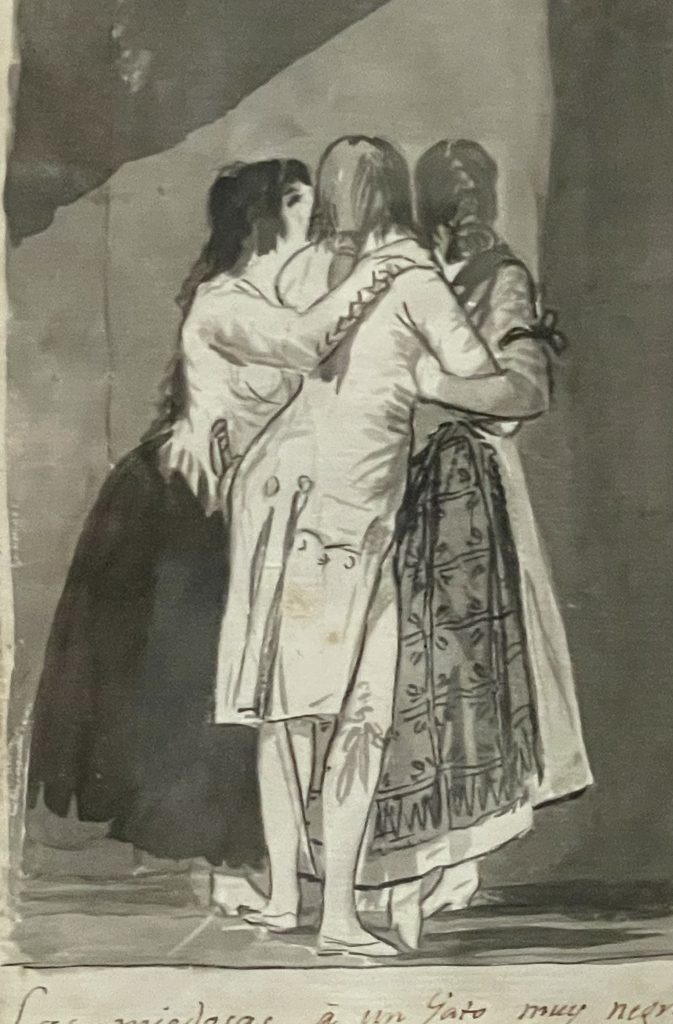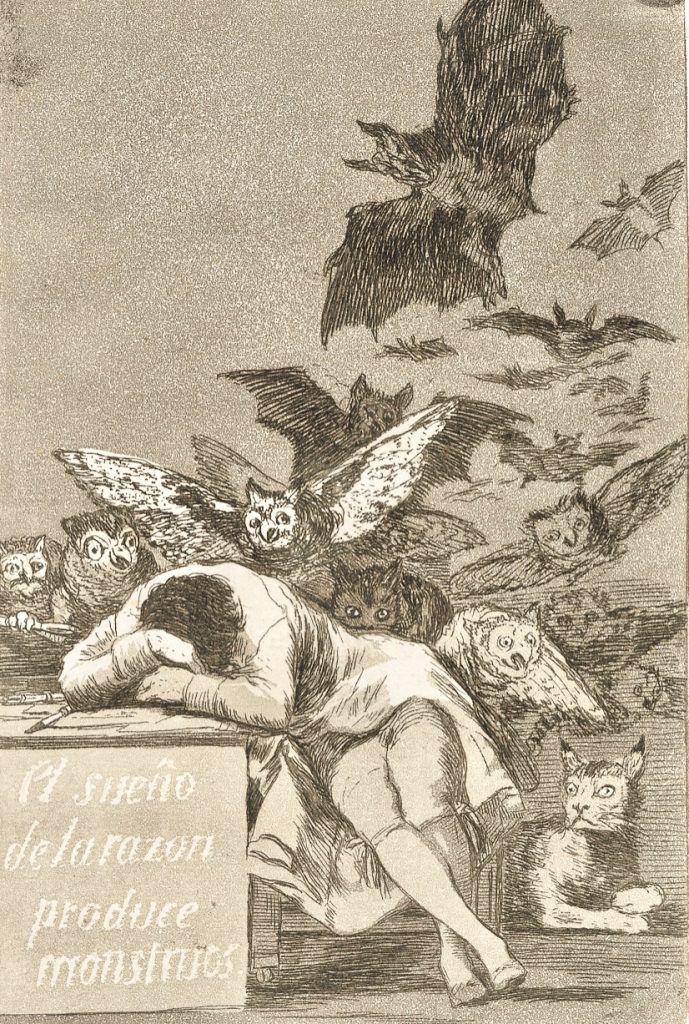Francisco Goya (1746–1828) filtered his subjective experiences, dreams and nightmares into his art. “Artdecision” offers a review of Goya’s exhibition at Fondation Beyeler, Basel.
F. Goya’s retrospective exhibition (10.2021 -01.2022) showed brilliant portraits, scenes of corrida and strange “Los Caprichos” prints that influenced French art of the middle of 19th century (Delacroix, E. Monet, Baudelaire). The dream-like images of “Los Caprichos” are also in line with the current art trends at “The Milk of Dreams” expositions of Venice Art Biennale (04 – 10.2022).
“The Sleep of Reason Produces Monsters”, ” Two of the Kind”,” They Carried her off”, “They Say Yes and Give Their Hand to the First One Who Comes”, “Here Comes the Bogeyman” and other prints show the world as a masquerade with its misfortunes, unhappy marriages, scenes of war.

Next to the darkness of Goya’s “Caprichos” the sad motifs in Byron’s poetry, the mystery of the night of the German romantics, even “The Wreck of Raft of the Medusa” by Théodore Géricault seem an abstraction.
To convey dramatic emotions and despair Goya found an “objective correlative”: hazy twilight, ambiguity, dense undefined space, hard scratchy drawing. “Objective correlative” as a notion was introduced by T. S. Eliot to describe Hamlet’s crisis. it is an artistic method to express the character’s emotions by showing rather than describing feelings.

Drama hides in the shadows. In one of his key works, “Sleep of reason” Goya uses light to unfold space. Darkness symbolises the reverse side of a clear illuminated mind: “The dream of reason produces monsters, united with reason, imagination is the mother of all arts”.
The reversed world of prints by Goya sums up the time from the revolution to the restoration.
written by: Irina Vernichenko

